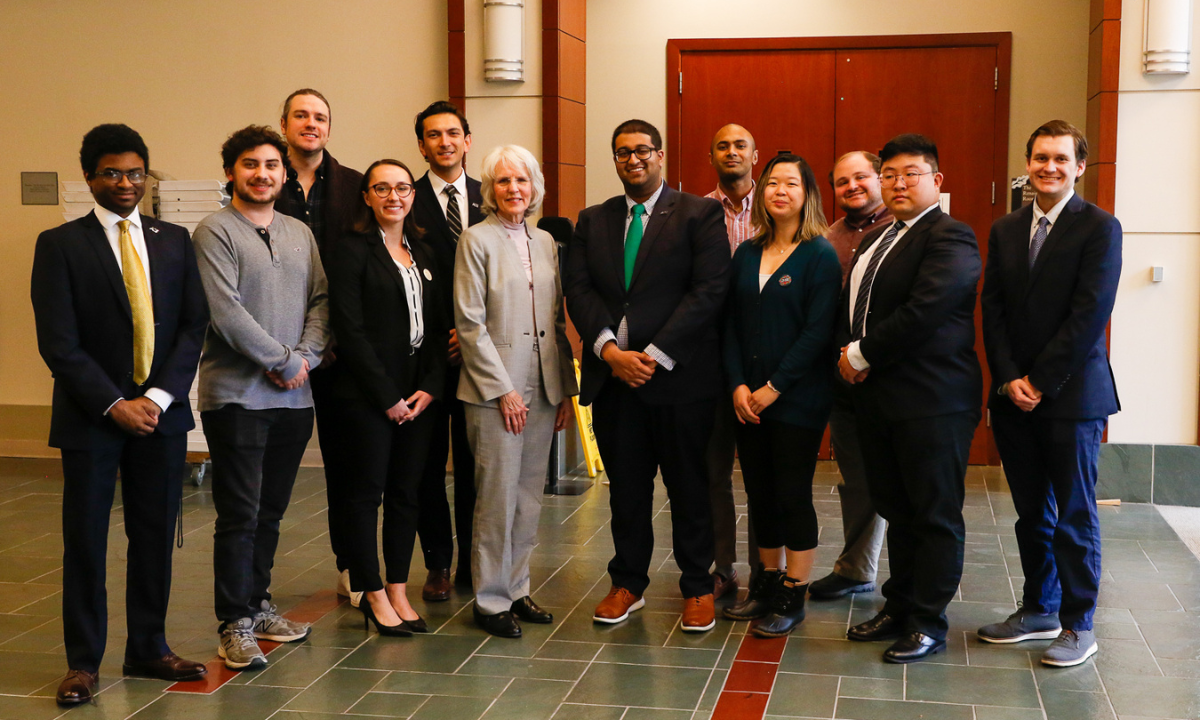 Ramon Ryan ’21 identifies a major issue with the way the Federal Communications Commission treats satellites that concerns astronomers and other scientists in a paper forthcoming in the Vanderbilt Journal of Entertainment and Technology Law. The paper, “The Fault in Our Stars: Challenging the FCC’s Treatment of Commercial Satellites as Categorically Excluded from Review under the National Environmental Policy Act,” is slated for publication in JETLaw this summer. Ryan joined the staff of the student-edited scholarly journal as a 2L and wrote the paper as his journal Note.
Ramon Ryan ’21 identifies a major issue with the way the Federal Communications Commission treats satellites that concerns astronomers and other scientists in a paper forthcoming in the Vanderbilt Journal of Entertainment and Technology Law. The paper, “The Fault in Our Stars: Challenging the FCC’s Treatment of Commercial Satellites as Categorically Excluded from Review under the National Environmental Policy Act,” is slated for publication in JETLaw this summer. Ryan joined the staff of the student-edited scholarly journal as a 2L and wrote the paper as his journal Note.
Ryan chose to research the topic after learning that the FCC was not requiring assessments of the environmental impact of commercial satellites before approving their launch, which he believes violates the National Environmental Policy Act. “One might assume that the FCC evaluates new commercial satellite projects for their environmental impact, both to comply with NEPA and to avoid scenarios such as a company using mercury as a satellite propellant or permanently altering the aesthetic of the night sky,” Ryan states in his paper, “but this assumption would be incorrect.”
Ryan takes issue with the FCC’s current stance that commercial satellite projects are categorically excluded from environmental reviews. He argues that the FCC has opened itself up to litigation by not following the NEPA statute and assessing all environmental impacts of commercial satellites, both in terms of light pollution that would stymie scientific research and environmental pollution. He proposes that the FCC use NASA’s NEPA review process as a model for conducting required environmental impact assessments of commercial satellites.
“This paper suggests that the way the FCC is treating commercial satellites under NEPA needs updating and offers a way to do that,” said J.B. Ruhl, who co-directs Vanderbilt’s Energy, Environment and Land Use Program. “The FCC’s categorical exclusion of commercial satellite launches from environmental review is an issue that is ripe for review.”
Ryan notes that commercial satellites pose serious threats both to astronomical research due to light pollution and to the environment due to the potential use of propellants containing mercury and other hazardous chemicals. These impacts, he says, clearly merit an assessment under the NEPA statute, which, he contends, requires the FCC to assess the environmental impact of commercial satellite projects before approving them for launch.
Light pollution is a major concern for astronomers because of the sheer numbers of commercial satellites currently planned. SpaceX plans to launch approximately 12,000 satellites to complete its Starlink commercial network; other companies are planning similar networks. “Fewer than 1,500 satellites currently orbit the Earth; that number will increase by more than eight times if approved commercial satellite launches occur as planned,” Ryan said. “Already, the unparalleled brightness from some of these new satellites disrupts astronomical research in the night sky. Large satellite constellations also risk changing the aesthetics of the night sky.”
The National Aeronautics and Space Administration does not use mercury as a satellite propellant because it is a dangerous neurotoxin, but Ryan notes that at least one commercial satellite company has considered its use. “Mercury is a heavy element. If used in the propulsion systems of large satellite constellations orbiting between 300 and 1,200 kilometers above Earth, mercury would sink back down to the surface into the soil and water,” he said.
Ryan’s paper has attracted national attention even before its publication. In a Jan. 16 Scientific American article, “The FCC’s Approval of SpaceX’s Starlink Mega Constellation May Have Been Unlawful,” science journalist Jonathan O’Callaghan touts Ryan’s paper as a welcome aide in a “battle for the sky” that “astronomers who rely on unsullied skies for their profession and members of the general public who enjoy the natural beauty of what lies above stand to lose.”
O’Callaghan reports that Ryan’s paper offers a ray of hope to professional and amateur astronomers concerned about the impact of light pollution resulting from a dramatic increase in the number of satellites orbiting the Earth. “In ignoring a key piece of federal environmental legislation, the FCC could be sued in a court of law—and lose—potentially halting further launches of mega constellations until a proper review is carried out,” he stated.
The paper was also reported on by Business Insider and Futurism.
Ryan will serve as Editor-in-Chief of JETLaw for 2020-21. He started a new student organization, the Space Law Society, during his 1L year.
